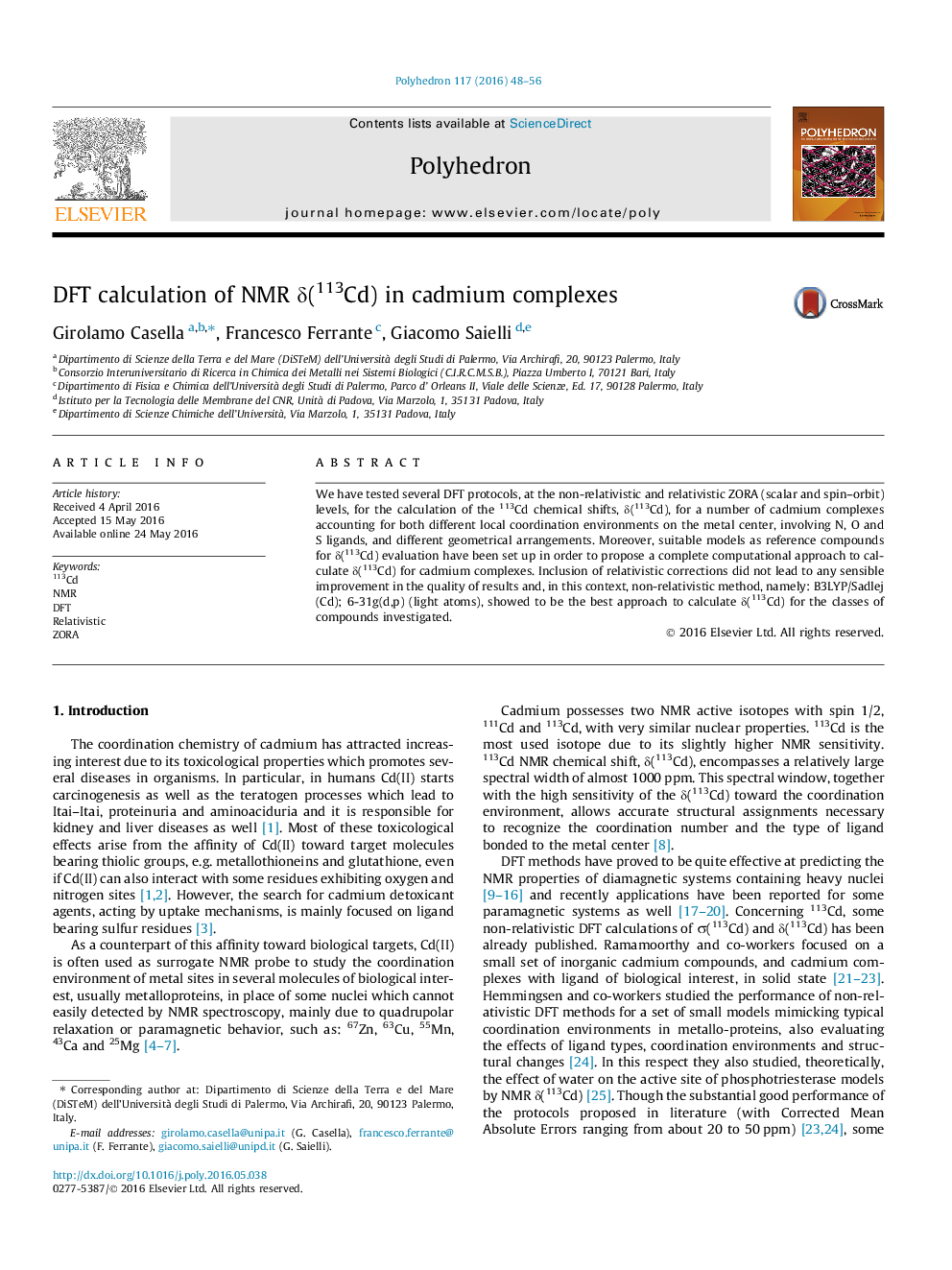| Article ID | Journal | Published Year | Pages | File Type |
|---|---|---|---|---|
| 1336180 | Polyhedron | 2016 | 9 Pages |
We have tested several DFT protocols, at the non-relativistic and relativistic ZORA (scalar and spin–orbit) levels, for the calculation of the 113Cd chemical shifts, δ(113Cd), for a number of cadmium complexes accounting for both different local coordination environments on the metal center, involving N, O and S ligands, and different geometrical arrangements. Moreover, suitable models as reference compounds for δ(113Cd) evaluation have been set up in order to propose a complete computational approach to calculate δ(113Cd) for cadmium complexes. Inclusion of relativistic corrections did not lead to any sensible improvement in the quality of results and, in this context, non-relativistic method, namely: B3LYP/Sadlej(Cd); 6-31g(d,p) (light atoms), showed to be the best approach to calculate δ(113Cd) for the classes of compounds investigated.
Graphical abstract113Cd chemical shifts, δ(113Cd), have been calculated, at DFT non-relativistic and relativistic ZORA (scalar and spin–orbit) levels for several cadmium complexes, accounting for both different local coordination environments and geometrical arrangements. Non-relativistic DFT approaches can be exploited to calculate δ(113Cd) for the compounds investigated and related systems.Figure optionsDownload full-size imageDownload as PowerPoint slide
